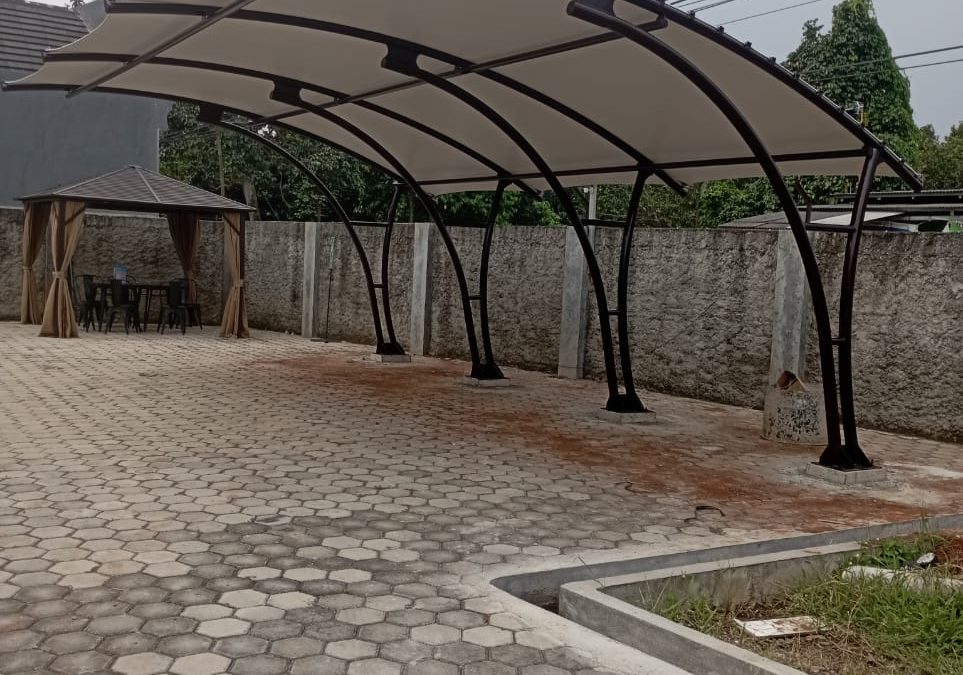In recent decades, architecture has experienced a remarkable shift toward more innovative and sustainable construction methods. Among these, tensile structures have emerged as a powerful solution for designers seeking both functionality and aesthetics. Characterized by their lightweight nature, elegant curves, and ability to span vast spaces with minimal material, tensile structures are becoming increasingly popular in public buildings, sports arenas, exhibition halls, outdoor canopies, and more.
In this article, we’ll explore what tensile structures are, how they work, their benefits, applications, and why they represent the future of modern architectural design.
What is a Tensile Structure?
A tensile structure is a construction of elements carrying only tension and no compression or bending. Unlike traditional buildings that rely on rigid elements like beams and columns, tensile structures use flexible membranes or fabrics that are held in place by tension. These membranes are typically made from materials like PVC-coated polyester, PTFE-coated fiberglass, or ETFE films, supported by steel cables or poles.
The form of a tensile structure is determined by the balance of tensile forces within the fabric and the boundary supports, resulting in organic and fluid shapes that cannot be easily achieved with conventional materials.
The Science Behind Tensile Structures
Tensile architecture operates on simple but effective engineering principles. By pre-stressing the fabric membrane, it becomes strong and stable enough to withstand environmental forces such as wind, rain, and snow. The tension creates a self-supporting structure that doesn’t require internal columns, which makes tensile structures perfect for large open spaces.
Engineers and architects use computer modeling and form-finding techniques to determine the optimal shape for the membrane, ensuring both structural integrity and aesthetic appeal.
Key Benefits of Tensile Structures
1. Aesthetic Appeal
One of the main reasons architects love tensile structures is their visual impact. Their flowing, dynamic shapes add elegance and a futuristic feel to any environment. Whether used in a public park or a commercial plaza, tensile designs create a bold architectural statement.
2. Lightweight and Flexible
Tensile materials are extremely lightweight compared to steel or concrete, yet they provide impressive strength. This allows for creative and flexible designs that cover large spans without heavy foundations or supports.
3. Cost-Effective
Due to their minimal use of materials and quick installation time, tensile structures are often more cost-effective than traditional construction. They require less labor, reduce the need for extensive groundwork, and can be prefabricated off-site.
4. Natural Light and Energy Efficiency
The translucent nature of certain tensile membranes allows for the passage of natural light, reducing the need for artificial lighting during the day. Some advanced membranes also have UV-blocking and heat-reflective properties, contributing to energy efficiency.
5. Durability and Low Maintenance
Modern tensile materials are engineered to resist weathering, UV degradation, corrosion, and fire. With proper design and material choice, these structures can last 20–30 years or more with minimal maintenance.
Common Applications of Tensile Structures
Tensile structures are incredibly versatile. Here are some of their most popular applications:
• Stadium Roofs and Arenas
Large sports venues often use tensile structures to create expansive roof systems that provide coverage without obstructing views. The Allianz Arena in Germany and the Olympic Stadium in Munich are iconic examples.
• Outdoor Canopies and Walkways
In commercial spaces, tensile canopies offer shade and shelter while maintaining an open and airy atmosphere. They are commonly used in shopping malls, public transportation terminals, and airports.
• Event Pavilions and Exhibition Halls
Temporary or semi-permanent tensile structures are ideal for exhibitions and festivals, offering easy setup and removal without compromising structural safety.
• Architectural Landmarks
Many public parks and urban spaces use tensile membranes to create eye-catching focal points or artistic shade structures that blend form and function.
• Carports and Shelters
Compact tensile structures are widely used as car shelters, bus stops, and pedestrian walkways, offering practical protection from the elements.
Material Options in Tensile Architecture
Several materials are used in tensile construction, each offering different properties:
- PVC-coated polyester: Cost-effective, flexible, and UV-resistant. Commonly used for short to medium-term structures.
- PTFE-coated fiberglass: Highly durable, fire-resistant, and self-cleaning. Suitable for long-term applications.
- ETFE (Ethylene Tetrafluoroethylene): Lightweight, transparent, and recyclable. Often used in innovative projects requiring natural light transmission.
The selection of material depends on the project’s scale, location, expected lifespan, and budget.
Sustainability and Environmental Impact
Tensile structures are inherently more sustainable than traditional building methods due to their minimal use of materials and energy-efficient properties. Some membranes are even recyclable at the end of their life cycle. Additionally, because they allow for natural light and reduce heating/cooling needs, they can contribute to green building certifications like LEED.
Their short construction time also minimizes the environmental disruption typically associated with large-scale projects.
Challenges in Tensile Structure Design
Despite their advantages, tensile structures do come with certain challenges:
- Specialized Engineering: Tensile structures require precise engineering and design. Form-finding and load analysis are more complex than traditional construction.
- Initial Cost for High-End Materials: Advanced membranes like PTFE or ETFE may have higher initial costs, though they pay off in the long term.
- Maintenance in Harsh Climates: While durable, tensile membranes can accumulate dust or mildew in humid environments if not properly maintained.
However, these challenges are typically manageable with experienced architects, engineers, and regular inspections.
Future Trends in Tensile Architecture
As technology and materials continue to evolve, tensile structures are poised to play a bigger role in the future of construction. Here are some anticipated trends:
- Integration with Smart Technologies: Sensors embedded in tensile fabrics could monitor tension levels, detect damage, or even adjust lighting based on sunlight.
- Bioclimatic Designs: Tensile structures will be increasingly used in climate-adaptive architecture, optimizing natural ventilation and reducing carbon footprints.
- Modular and Mobile Solutions: Prefabricated tensile modules will become more common for temporary housing, disaster relief, or remote facilities.
Conclusion
Tensile structures represent a perfect balance of art, science, and sustainability in modern architecture. With their unique combination of beauty, efficiency, and adaptability, they are ideal for a wide range of applications—from iconic stadiums to everyday shelters.
As urban landscapes evolve, tensile architecture offers an exciting alternative that meets the needs of both present and future generations. For architects, developers, and city planners looking for smart, sustainable solutions, the tensile structure is no longer just an option—it’s a visionary step forward.

